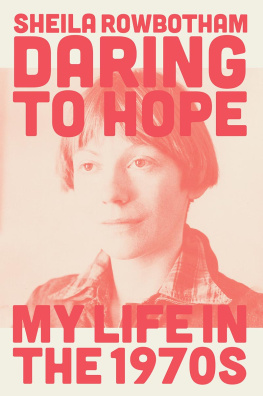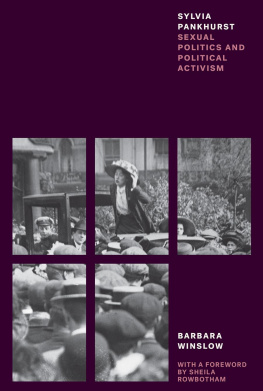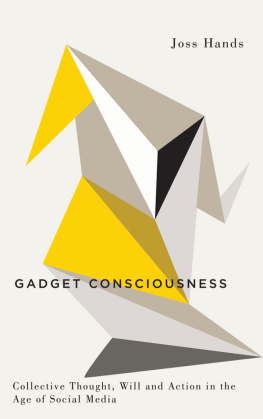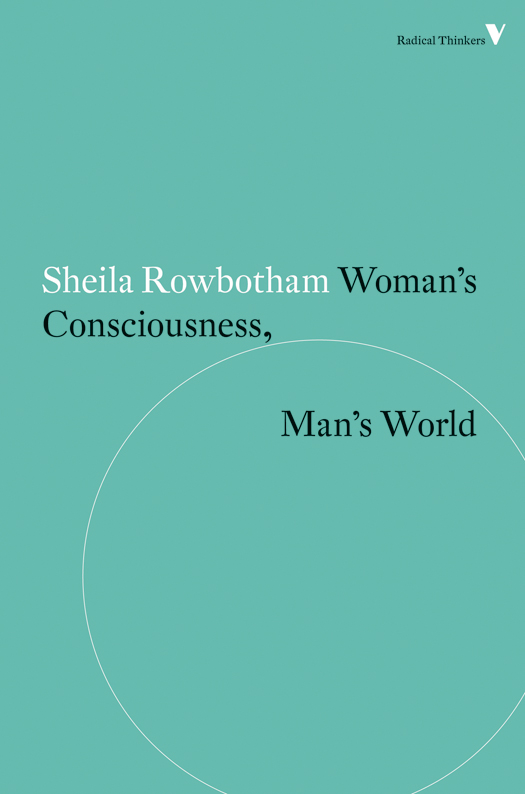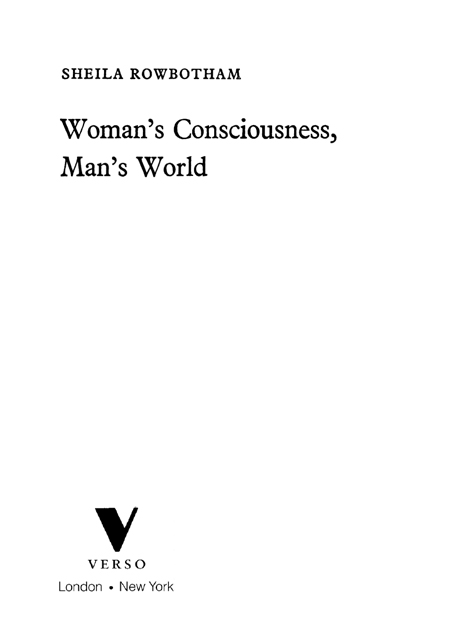First published by Verso 2015
First published by Pelican Books 1973
Sheila Rowbotham 1973, 2015
All rights reserved
The moral rights of the author have been asserted
Verso
UK: 6 Meard Street, London W1F 0EG
US: 20 Jay Street, Suite 1010, Brooklyn, NY 11201
www.versobooks.com
Verso is the imprint of New Left Books
ISBN-13: 978-1-78168-753-6
eISBN-13: 978-1-78168-754-3 (US)
eISBN-13: 978-1-78168-755-0 (UK)
British Library Cataloguing in Publication Data
A catalogue record for this book is available from the British Library
Library of Congress Cataloging-in-Publication Data
A catalog record for this book is available from the Library of Congress
v3.1
Contents
Acknowledgements
I would like to thank the following for reading and criticizing this book while it was being written:
Sally Alexander, Val Charlton, Val Clarke, Sharon Collins, Anna Davin, Suzie Fleming, Hermione Harris, Juliet Mitchell, Laura Mulvi, Jean McCrindle, Ursula Owen, Amanda Sebestyen, Sue Sharpe, Sue Vickery, Michelene Wandor, Liz and Lucy Waugh; also, Ann Scott who typed it as well, and David Widgery whose love of words and their weaving persuaded me to write as I fancied, and take my own assertions about the redefinitions of personal and political seriously enough to include myself in Part 1.
For help with Part 2 thanks to Stephen Bodington who set off the train of thought, to Roberta Hunter-Henderson whose paper at the Sheffield Womens Liberation Conference in summer 1970 also contributed, to Franoise Ducroq whose notes I read on the family.
For criticism of the original draft of Part 2, which was written as a paper for a seminar held by members of the Institute of Race Relations in spring 1971, I would like to thank some of the people who attended the seminar, particularly Bill Tabb; also members of Sheffield and Leeds Womens Liberation Groups, a meeting of London Womens Liberation Groups, and Arsenal Workshop Group, who helped me to sort my ideas out and make my writing clearer. For suggestions and additions to the original paper I am also indebted to Bob Rowthorn and Jean Gardiner who gave me the confidence to make economic pronouncements. For help with Chapter 6, thanks to May Hobbs, Jean Wright and other members of the Night Cleaners Campaign, also to Gertie Roche for information about the Leeds clothing strike, and Audrey Wise for the letter I have quoted and advice and ideas about women and trade unions.
The bulk of this book was written in the summer of 1971 as part of Women, Resistance and Revolution. It grew too big and had to be cut apart and lead its own life. I finished revising it in the spring of 1972. In the process I was assimilating the ideas of women in womens liberation not only in Britain but in France, Germany, Holland, Australia, Japan, Italy, Sweden and of course the USA, often without realizing where exactly thoughts came from. So although I am responsible for what I have made, the making of it has been the ideas and actions of the womens movement. This does not mean of course that everyone in womens liberation will agree with this book or even with sections of it. In order to show there are several approaches to the problems I have discussed and to enable anyone who is interested to pursue them further I have included a list of pamphlets and articles published after this was written.
Introduction
Bewilderment and mystery surrounded the birth of womens liberation. It seemed to come out of an ideological lacuna belonging neither to previous feminism nor to Marxism. Orphan-like it had apparently sprung up from nowhere in particular, unashamed by its lack of origins or kin. Feminists and Marxists alike were convinced that when it grew up, and became sensible like them, it would shed its ill-defined absurdities. Both claimed that whatever it was the women in the new movement were trying to say, the essential points had been fully covered by their respective traditions in a much more political and worked-out fashion long before. Older women who could remember feminism were irritated by the claims that womens liberation was something new. Marxists were impatient of the claim that middle-class women were oppressed and confident that feminism was a deviation from class politics. The distortion both of the feminist past and of the part women have played in revolutions confused the whole discussion. In the process the specific crannies and fissures of social experience which had given rise to womens liberation were neglected.
In fact womens liberation does have strands of the older equal-rights feminism, and it also has a persistent revolutionary socialist connection, but it is something more than either of these. However, the new feminist consciousness has deeper and less obvious origins.
This book is an attempt to describe the form which this consciousness has taken, and some of the social changes which forced its growth. In trying to describe what is specific to the female consciousness which has appeared in womens liberation, I am not suggesting that biology is destiny. I do not believe that women or men are determined either by anatomy or economics, though I think both contribute to a definition of what we can be and what we have to struggle to go beyond. An emergent female consciousness is part of the specific sexual and social conjuncture, which it seeks to control and transform. But its very formation serves to change its own material situation.
In the first two chapters I touch on some of the ways of thinking which acted as a block upon the emergence of a revolutionary feminism: the failure of both the rational equal-rights feminism of the suffragette era, and the Marxist orthodoxy of Stalins rule, to come to terms with the insights of Freudianism and cultural studies of non-capitalist societies. More personally I have tried to describe the caricature of feminism transmitted into my own post-war adolescence, and the awkwardness in the desiccated revolutionary tradition of the mid sixties in Britain which made it particularly difficult to use Marxism as a creative and living force. My generation, who came to left politics immediately before the eruption of the student revolt, inherited a Marxism which had only continued in the western capitalist countries as a defensive body of orthodoxy surrounded by protective walls, encrusted with fear, stiff with terror, brittle with bitterness, aching with disillusionment. There are many ways of trying to understand sectarianism. I have simply brought into relief my own bemused encounter, like a child who finds a penny and covering it with paper brings the imprint into view by scratching it with a lead pencil. Less tangibly there were too the popular permutations of anti-rationalism, and the images of masculinity and femininity, picked up, turned round, rolled out, packaged, flickering, throbbing through rock music, films and TV. But the things which were called political were apparently irreconcilably dissociated from personal life.
In Through the Looking-Glass I am trying to examine the way society communicates to the individual. It is not that the perception of women is unique. On the contrary, oppression has many common features and thus rebellion can locate and connect itself. For example, the demands of both the working class and of black liberation to control and define their existence now and in the past, their resistance to the appropriation of their labour, their language, their gestures, their dreams, have helped many women to wonder where they are in



